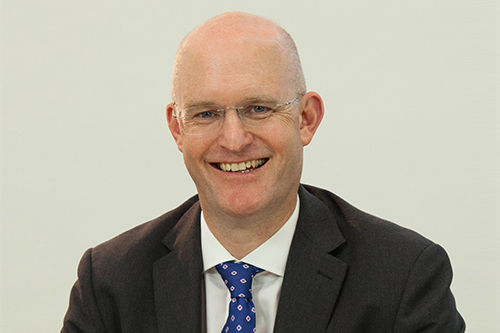

Examining what 2021 will hold for the insurance industry is as much about assessing the legacy of the COVID-19 pandemic as it is theorising how the sector will evolve over the next 12 months. BT’s director of insurance, wealth management and financial services, Alexandra Foster (pictured above) highlighted that, from her perspective, the greatest legacy of the crisis has been the almost overnight changes in habits the pandemic prompted across customers and businesses.
“For a long time, insurance has been a static industry,” she said, “but as the industry’s working model has shifted to firstly accommodate working from home, and then a hybrid work model, firms have reacted quickly to put in place short- and long-term solutions that enable business continuity.”
Dave Ovenden (pictured below), global pricing and underwriting leader at Willis Towers Watson, noted that what the ‘new normal’ will look like is a key consideration for 2021. The insurance industry will have to question both what it gains and what it loses from employees working from home as the year progresses and there’ll be different companies exploring different models.
“We’ve seen some of the syndicates and some of the Lloyd’s players say they’re losing too much from everyone being at home, as it’s simply not in-keeping with the culture of their organisations,” he said. “And other organisations are at the other end of the extreme and are looking at this from a bit of a jaundiced cost-saving aspect. So, it will be interesting to see how the different strategies play out and which group of strategies delivers the best outcomes.”
Beyond examining how the working processes of the industry have changed over the last year, Foster highlighted that the COVID crisis is making itself known across every aspect of insurance. Traditionally, she said, underwriting and claims handling have required high levels of contact. As COVID-19 imposed limitations on conducting business face-to-face, the insurance industry has used technology and innovation to continue business as usual.
Commenting on this, Ovenden noted that insurance companies will be looking to implement any lessons they’ve learned over the previous year. In his role, he has spoken to the market about the need for pace and agility, and for a continuation of the digital-first approach the pandemic has demanded. From the distribution side, he said, given the coverage questions that emerged last year, there is an opportunity for good intermediaries to truly strengthen their hand.
“If you’re a business that has seen all these [coverage disputes] then, whether or not you were impacted, it will have highlighted the importance of good advice when it comes to coverage,” he said. “So, some of the challenges of last year in certain commercial sectors may strengthen the proposition of good distribution partners, if they’ve got good engagement with their clients and good technical knowledge about what is and isn’t covered.”
Going electric

Another element for the insurance industry to grapple with this year is the implications of the Lloyd’s Blueprint.
“There’s also more foundational things in that electronic trading of commercial risk that the Lloyd’s Blueprint is shining a light on,” Ovenden stated. “So, whether you trade it through the Lloyd’s platform, or whether it’s bilaterally traded between distribution, between broker and insurer, the whole wordings aspect can have an impact.
“I think a lot of energy to date has been spent looking at electronic trading as a pricing thing and an exposure-data thing where you send somebody exposure-data and they do the math and send you back a price. But I think the spotlight being on coverage and the wordings will mean that, actually, there’s some solution required in that space as well.”
Read more: PPL platform use hits all-time high
Conversations have highlighted product simplification as a way to make further electronic trading happen, he said, and in some sectors that will be possible and will be the way to move forward. But in other sectors, there is going to be a need to embrace complexity and find another way through it. This is where changes are going to come into force over 2021 and Willis Towers Watson is already thinking about this and putting intellectual property into the concept of machine-readable contracts.
This move will mean that the terms and conditions inherent in coverage wording will be understood to some extent within the trade – changing this from an exposure and price concept to an exposure, coverage and price concept. Over 2021, Ovenden believes this will move further into the limelight as there will be a call for standards and more publicised discussions as the need for the formation of a language to describe wordings cannot be solved by any single party.
“Ultimately, at some point in the future, depending on your view on AI, a computer might be able to read the wording and understand it,” he said, “but right now, it can’t. So [the answer is] to create an intermediate step that can describe the wording in a way that the computer can understand how it fits together and whether this component is a positive coverage or an exclusion or extension. This step means codifying the wording in a way that makes it tradable even if it’s not completely understood by the computer.”
Foster also cited the opportunities that she and her team have seen for the insurance industry to continue leveraging artificial intelligence alongside human expertise to further automate the claims process.
“2020 has seen the rise of smart underwriting and claims handling,” she said, “with business being handled virtually using a combination of digital conferencing platforms. As long-held perceptions around flexible working shift, we expect hybrid working to become the new normal, and for technology to enable business innovation and new ways of working.”
